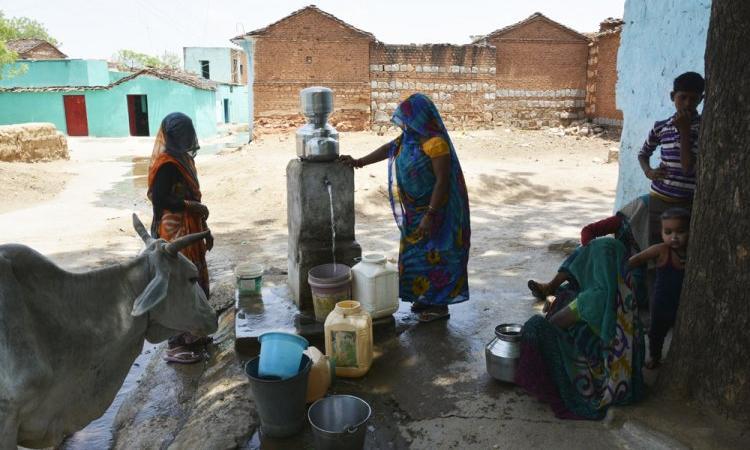
Haryana comes third in providing tap water to rural households under Jal Jeevan Mission
Haryana has become the third state in the country to provide access to clean drinking water to every rural household under the Jal Jeevan Mission after Goa and Telangana. Along with these states, the Union Territories of Andaman and Nicobar Islands, Puducherry, Daman and Diu and Dadra and Nagar Haveli have also achieved 100 percent completion of the Har Ghar Jal Mission.
In the last two years, the country has added more than five crore rural households with tap water connections as part of the flagship project of the Modi government.
The Haryana government was supposed to make the state a 'Har Ghar Jal' state by 2022, but it decided to advance it so that people can access clean water as soon as possible. (The Times of India)
One lakh out of 13 lakh samples of drinking water failed quality tests, reveals Centre
Over 1.11 lakh of the 13 lakh drinking water samples across the country were found to be contaminated, according to the government's surveillance programme. Samples from contaminated areas were found to include trace amounts of arsenic, fluoride, iron, and uranium in the earth layer, local land use practices like fertilisers, pesticides, livestock, and concentrated feeding operations. In addition, contamination can be caused by malfunctioning on-site wastewater treatment systems or by microbial contamination through a mixture of wastewater in the drinking water.
Jal Shakti ministry informed that so far, 2,011 active laboratories are testing water samples, and water from 2,05,941 villages has been tested. (Livemint)
India tops the list of terrestrial water storage hotspots: WMO
Global terrestrial water storage (TWS) decreased by 1 cm per year in 20 years (2002-2021) according to the World Meteorological Organization (WMO)'s report 2021 State of Climate Services.
Antarctica and Greenland have suffered the most losses, followed by India, where loss is at least three centimeters per year. Most of the losses have been observed in the northern part of India.
TWS is the sum of all water on the land surface and in the subsurface, i.e. surface water, soil moisture, snow and ice and groundwater. Human and natural stressors all over the world are putting tremendous pressure on water resources. Among them are population growth, urbanisation, and decreasing freshwater availability. (Down to Earth)
Meghalaya's Lukha river gets a new lease of life
Until a decade ago, the Lukha river in the East Jaintia Hills district was considered toxic. In its 2012 investigation report, the Meghalaya Pollution Control Board blamed acid mine drainage and runoff from coal mines for the contamination of the river.
The District Mineral Fund conducted a pilot project to remove toxic materials from the river water by using algae in response to reports that the river's pH levels were low.
As a result of this detoxification process, the pH level of a critical stretch of the river has improved significantly. Following the success of the rejuvenation process, the state government plans to expand this pilot project to other rivers. (The Hindu)
Cauvery found to contain alarming levels of pharmaceutical contaminants
A study carried out with joint funding from Water Technology Initiatives of the Department of Science and Technology, Government of India, and the UK Natural Environment Research Council has found that the waters of the Cauvery river in south India are polluted by a range of emerging contaminants. Of these contaminants, pharmaceutical contamination was found to be particularly serious since their presence in water bodies, even in minuscule amounts, can harm human beings and ecosystems. For two years, the team examined the seasonal variation of emerging contaminants in the river and found alarming results.
The post-monsoon period demonstrated a higher level of various types of contaminants and the freshwater intake points were found to have extraordinarily high concentrations of pharmaceutical contaminants. Contaminants included anti-inflammatories, anti-hypertensives, enzyme inhibitors, antidepressants, and antibiotics. (Down to Earth)
This is a roundup of important news published from October 5 - 19, 2021. Also read policy matters this fortnight.